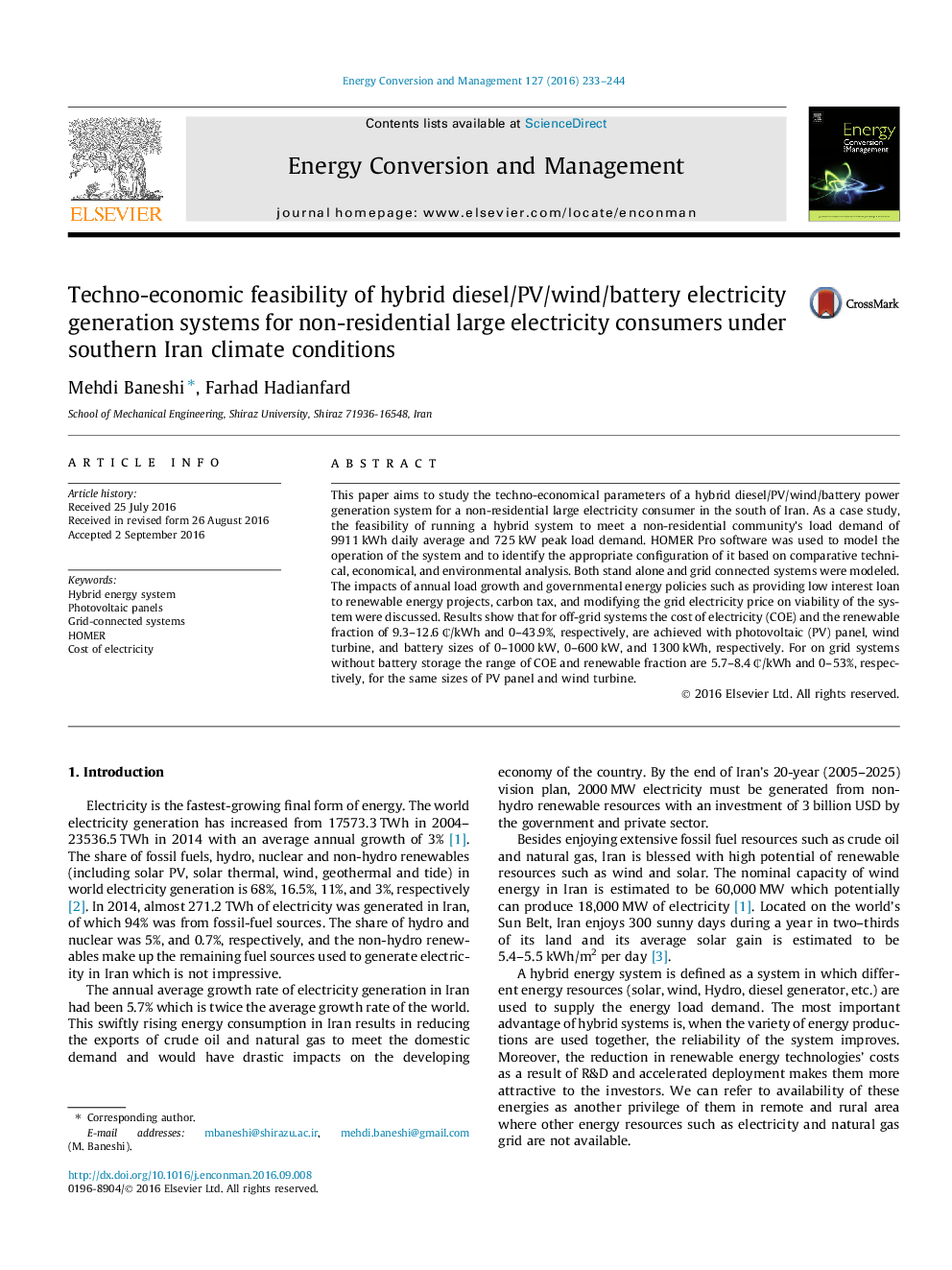| Article ID | Journal | Published Year | Pages | File Type |
|---|---|---|---|---|
| 5013395 | Energy Conversion and Management | 2016 | 12 Pages |
Abstract
This paper aims to study the techno-economical parameters of a hybrid diesel/PV/wind/battery power generation system for a non-residential large electricity consumer in the south of Iran. As a case study, the feasibility of running a hybrid system to meet a non-residential community's load demand of 9911Â kWh daily average and 725Â kW peak load demand was investigated. HOMER Pro software was used to model the operation of the system and to identify the appropriate configuration of it based on comparative technical, economical, and environmental analysis. Both stand alone and grid connected systems were modeled. The impacts of annual load growth and governmental energy policies such as providing low interest loan to renewable energy projects, carbon tax, and modifying the grid electricity price on viability of the system were discussed. Results show that for off-grid systems the cost of electricity (COE) and the renewable fraction of 9.3-12.6Â âµ/kWh and 0-43.9%, respectively, are achieved with photovoltaic (PV) panel, wind turbine, and battery sizes of 0-1000Â kW, 0-600Â kW, and 1300Â kWh, respectively. For on grid systems without battery storage the range of COE and renewable fraction are 5.7-8.4Â âµ/kWh and 0-53%, respectively, for the same sizes of PV panel and wind turbine.
Related Topics
Physical Sciences and Engineering
Energy
Energy (General)
Authors
Mehdi Baneshi, Farhad Hadianfard,
